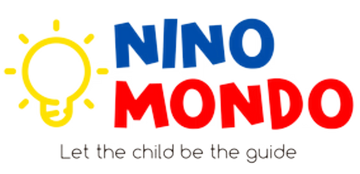What 9 repetitive play patterns is your newborn likely to display?
As parents, we often find ourselves puzzled by our baby's seemingly random behaviors. Why do they keep dropping toys from their highchair? Why do they put everything in their mouth? What's with the constant kicking and rolling around? While these actions may seem like mere mischief, they are actually part of a crucial process called schema development.
Schemas are patterns of behavior that babies exhibit as they explore and make sense of the world around them. By recognizing these schemas, we can better understand our little ones' development and provide them with the support they need to thrive. In this blog post, we'll dive into ten key schemas that are commonly observed in babies during their first year of life.
-
Grasping Schema: This schema involves reaching for and holding onto objects. Babies learn to use their hands and fingers to touch, hold, and manipulate items. By offering rings and rattles to grasp, you can support the development of fine motor skills and hand-eye coordination.
-
Mouthing Schema: Babies explore objects by putting them in their mouths, helping them learn about temperature, texture, size, and shape. This behavior is also a key part of sensory development. Provide safe items for gumming and biting, such as silicone teethers or natural wooden toys that don't pose a choking hazard
-
Tracking Schema: Involves following moving objects with the eyes. This schema helps develop visual and spatial awareness as babies learn to visually track objects moving across their field of view. Engage your baby by moving simple black and white or high contrast and then colorful objects slowly across their field of vision, using mobiles.
-
Listening Schema: This schema is about focusing on sounds and determining their source or understanding their meaning. Listening plays a crucial role in language development and auditory processing. Read aloud to your baby, play soft music, and provide gentle musical toys, soft chime balls, or rattles with bells to support their developing hearing
-
Reaching/Pulling/Pushing Schema: Engaging with objects by applying force to move them around. This schema helps build an understanding of how objects interact with physical forces, besides enhancing gross motor skills. A batting ring or a kicking ball are a great way to nurture this schema
-
Kicking Schema: Often seen when babies use their legs and feet to make contact with objects, which can be intentional or reflexive. Kicking helps in developing lower body leg muscles and coordination. Hang soft toys over your baby's feet or provide kick-activated toys like the Montessori Kicking Ball.
-
Rolling Schema: This involves moving the body in a rolling motion, which might include rolling from back to tummy and vice versa. It's a significant motor milestone that also aids spatial and bodily awareness. Encourage tummy time and support your baby's rolling with toys like the Spinning Drum or A Rolling Bell.
-
Smiling Schema : The act of smiling in response to various stimuli such as seeing familiar faces or hearing familiar voices. This schema is essential for emotional development and social interaction. Engage your baby in mirror recognition games or simple peekaboo games to get your baby smiling.
-
Socialisation Schema : Engaging with others through interaction and shared activities. This schema is about developing social skills and emotional connections with immediate family and you. Have a soft or indulge in singing lullabies with your baby to build a secure attachment making it easy for them to socialize as they grow,
By understanding these schemas of the early months and providing appropriate activities and materials, you can support your baby's development in a nurturing and engaging way. Remember, every child is unique, and their schema exploration may vary in intensity and timing. The key is to observe your baby's interests and preferences and tailor your interactions accordingly.
Embrace the chaos and enjoy watching your little one grow and learn through the fascinating world of schemas!
Check out our Newborn Insights Play Schema Cards to support your child’s developing schemas in the 0-3 months stage with 35 schema aligned activities that you can create with minimal to no DIY.

